[Review] Arkham Horror: Mother’s Embrace – Switch Review
- Developer: Asmodee Digital
- Publisher: Asmodee Digital
- Genre: Adventure, RPG, Strategy
- Released: 23rd March 2021
The name Arkham has a long and storied history in fiction dating back all the way from H.P. Lovecraft’s works to the more recent and superhero related Batman mythos. Arkham is also apparently of Islamic origin and means “happy”, which is quite ironic seeing how it’s commonly used.
From cardboard to circuit board.
Arkham Horror is a board game series dating all the way back to 1987, with modern revisions of course. It was a cooperative game where a group of players have to solve mysteries around the town of Arkham to close gates to the other world. Failure to do so results in immediate game over, or a confrontation with a deadly otherworldly creature, depending on the version chosen.
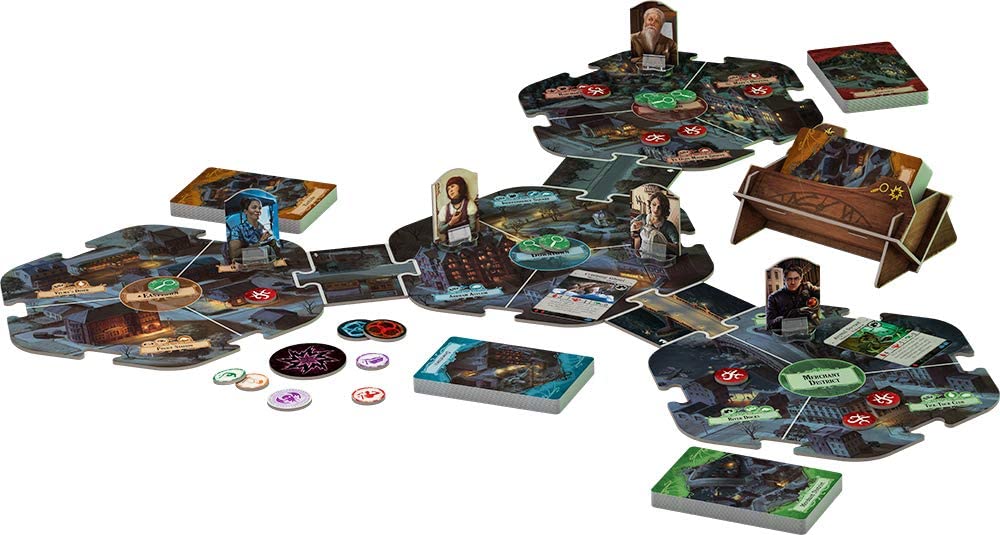
In the transition to the digital front, Arkham Horror: Mother’s Embrace retains the series’ narrative and backdrop, while converting the multiplayer cooperative aspect to a single player experience. How does the game hold up through this transition?
Alas, poor Jenny. I hardly knew her.
Taking a quick look through Arkham Horror’s history will turn up one of the series’ most iconic features: its investigators. There is quite a substantial cast of characters from all walks of life who all find themselves drawn into the swirling miasma surrounding Arkham.
Characters like Jenny Barnes (a dilettante who is searching for her missing sister), Harvey Walters (a visiting professor at Arkham’s Miskatonic University), and Jim Culver (a Jazz musician with a presumably haunted trumpet) all have interesting backstories and various motivations for getting roped up supernatural events. For those who have played the Arkham Horror games before, I’m sure seeing their favourite investigators moving and talking might be quite a treat. For myself though, I’m missing this nostalgic hit as I’ve yet to try any of the board games in question.
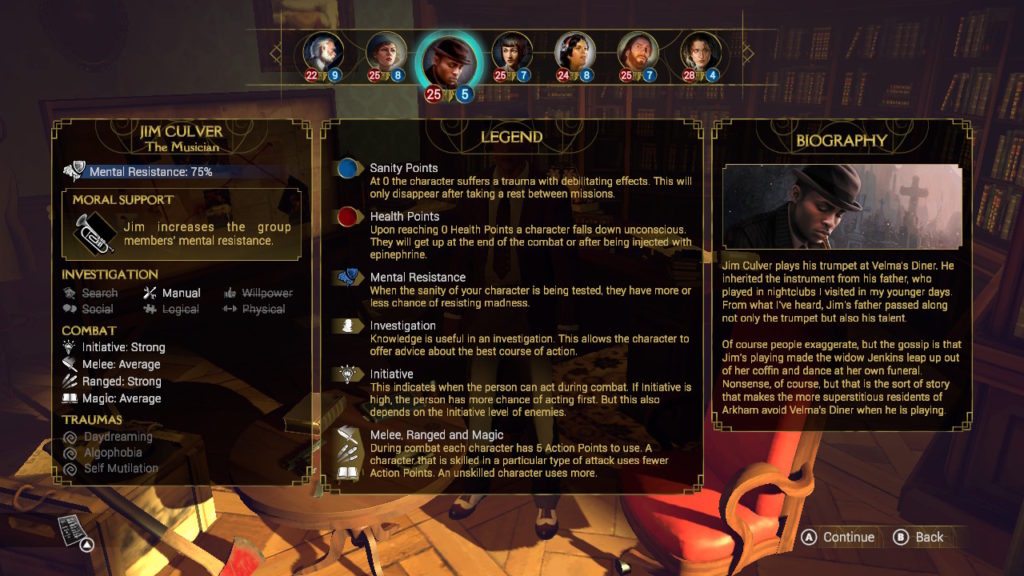
Mirror, mirror on the wall…
The game isn’t the prettiest Switch port by any stretch of the imagination. At times (in particular during battles), the game might look like someone smeared Vaseline over your visual receptacles. Sometimes the game gets too dark to see anything. Sometimes in the brighter areas, you see why the game prefers to be dark. Also, text in this game is really small. Quite often I caught myself squinting and bringing my Switch up to my face just to be able to read.
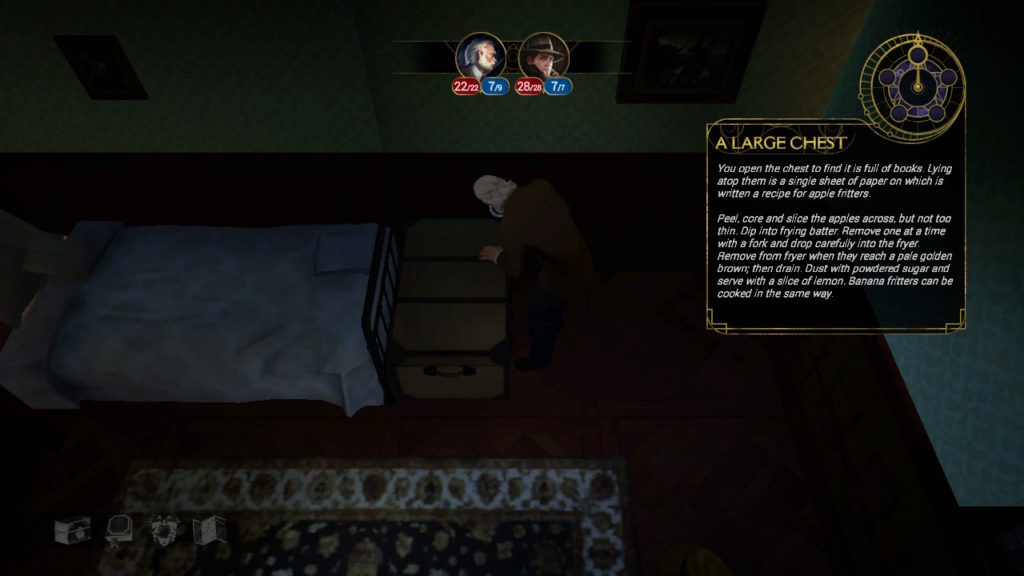
As for music, it’s nothing particularly groundbreaking. Creepy ambience, a touch of the odd sound effect here and appropriately spooky music. Serviceable, but unremarkable.
H.P.-Lite.
Given that the story has it origins in H.P. Lovecraft’s works, I did a cursory read on a few of his short stories. One thing that he does well would be his ability to create an oppressive atmosphere of dread and fear of the unknown. It is something that this game’s narrative doesn’t quite pull off. Instead the story, while mysterious, is rather straightforward and signposted as you tromp through familiar aspects of an investigation tale.
It starts with you arriving at the abode of a professor of astronomy through invitation. You soon discover that an unfortunate fate awaited her and steel yourself to investigate the odd circumstances surrounding your host’s death. Granted there are a few nice touches, one being your dead host effectively tagging along the player’s journey as a spectator of sorts bringing a sense of eerie unease, but ultimately I just didn’t feel the tension or dread one might expect from such a genre of story telling. One reason I suspect might be hampering this might be how your player’s sanity is being handled as you run about the game’s nine chapters.
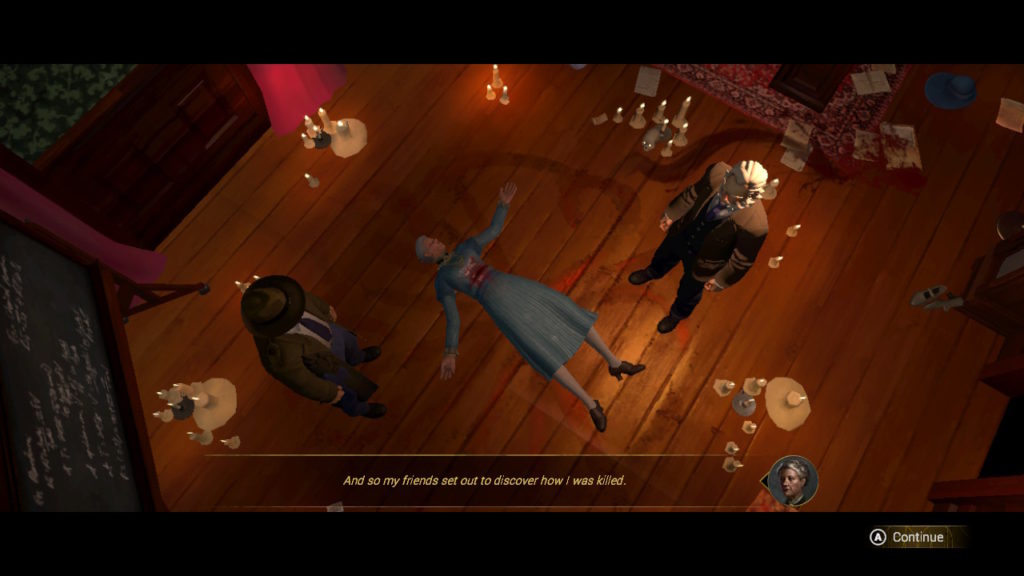
Mind-numbing.
During the investigation or adventure section of the game, you take control of the lead investigator and wander about a 3D environment looking for clues and items to help you progress through the story and clear up the shroud around the professor’s untimely demise. As you explore, some of your actions will trigger a sanity check for your investigators, and failing that (which is more often the case than not) will result in a deduction in sanity points. When it hits zero, your investigators will get a trauma, which fortunately can be removed by letting them rest in between missions.
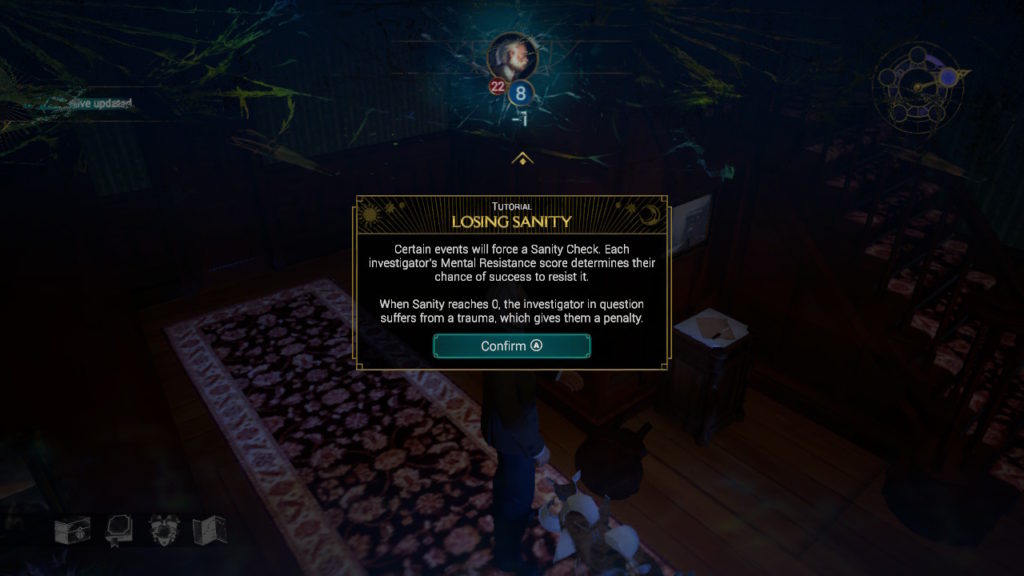
It’s an interesting system, carried from the board game mechanics I suspect, that forces the player to have to balance between searching for clues against avoiding something for fear of losing sanity. This, couple with some other factors the game has, can be quite stressful and as a result I found myself having to play this game in short bursts and take plenty of breaks. It also has the unintended side effect of avoiding some of the game’s creepier lore as these often brings about the sanity checks. Either that, or saving and reloading to avoid the loss, which also takes the player out of the game and ruins the flow, seeing as loading a game takes quite a long time.
Timely mistakes.
Also present is an every tickling clock (called a Mythos Clock) on the top right of the screen. When all the lights are filled on the clock, an event is triggered that usually means something bad is going to happen to your investigators. Whether it’s making them have a higher chance of failing sanity checks, immediately rolling for 2 sanity checks, or giving enemies increased defense in battle, you can be assured that nothing good will ever come from these events.
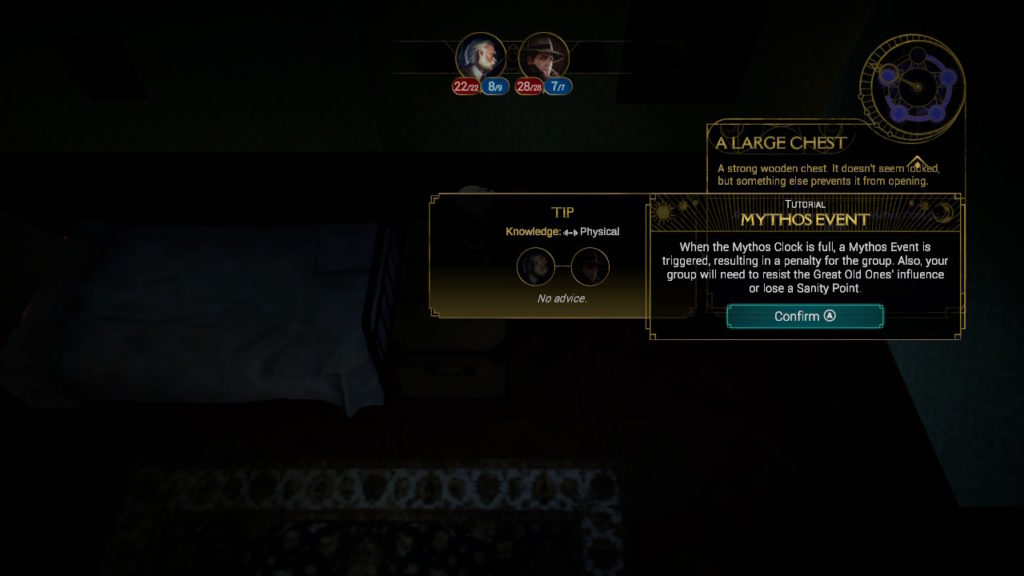
Actions that fill up the clock include passing complete enemy/allied turns in battle and, more annoyingly, incorrectly guessing what to do during investigations. You see, some times you come across a bookshelf. You suspect there might be something there so do you A) Search the shelf, B) Examine book names, or C) Reach over the shelf? Without your investigator having the right knowledge, it quickly devolves into a guessing game where you’ll edge closer to insanity… or just more stress. If you opt for the saving/loading route, there is of course the long waiting times to contend with.
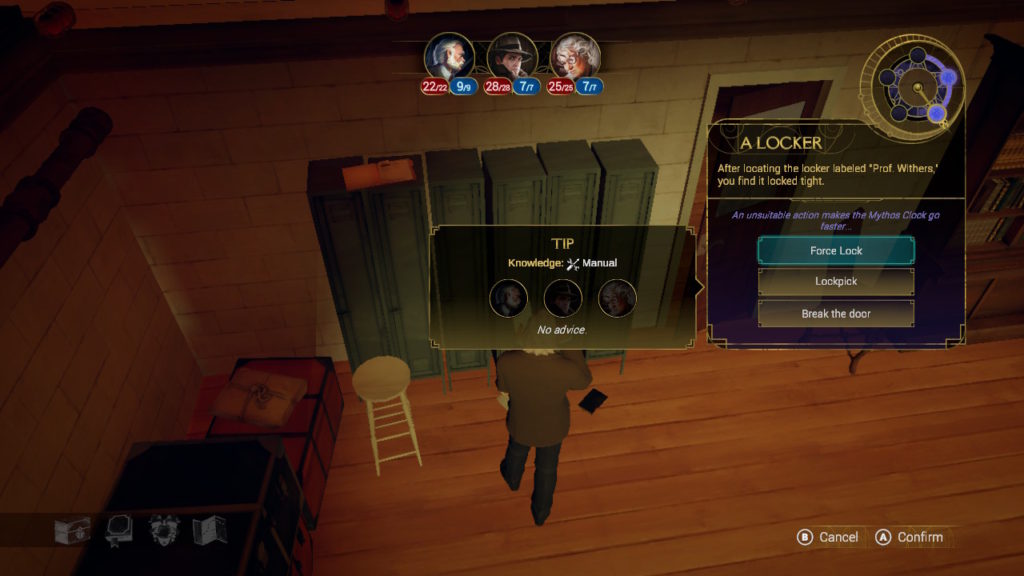
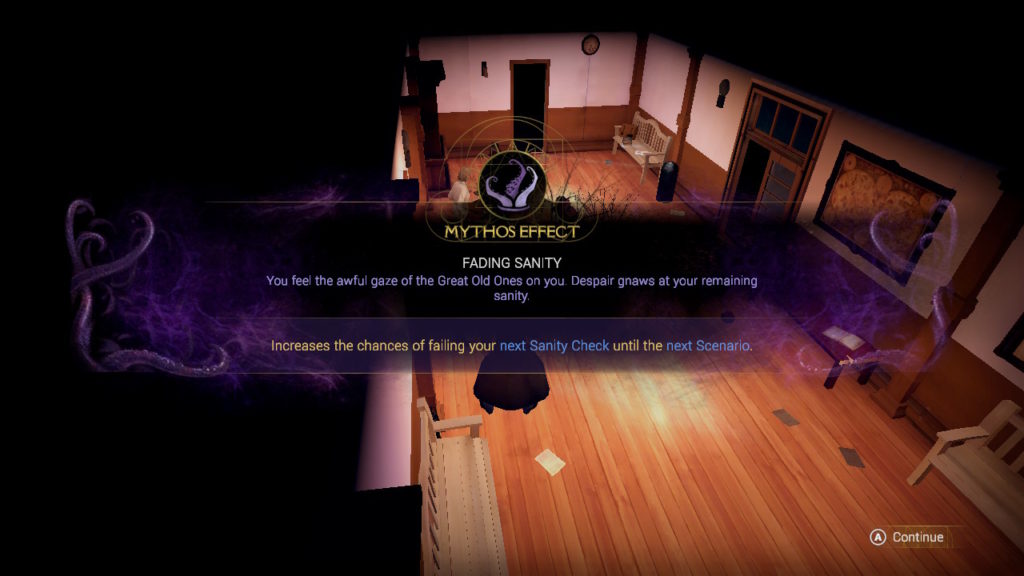
Arkham knights.
Oh, did I almost forget to mention combat? Yes, you do have the chance to fight back against enemies you come across throughout your journey. The adage ‘less is more‘ however comes to mind, especially when it comes to the preternatural foes.
Your investigators have three options to fight with: ranged weapons, melee and magic. Extremely limited inventory will have you deciding what your team should be carrying and what can be left behind as you plod along. In considering what to throw away, you should also be aware that weapons have durability and usually don’t last beyond one chapter if used often. Another feature to add onto the stress pile. Fortunately there are weapons (and ammo for ranged ones) to scavenge throughout the missions, at the risk of losing your sanity of course.
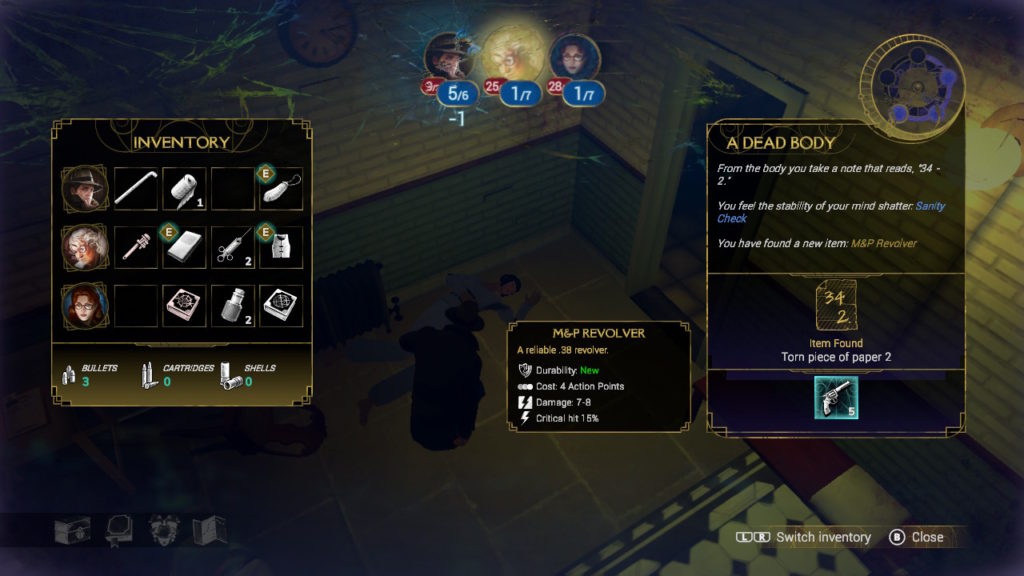
While actually in battle, the game takes a turn-based approach to the proceedings. Turn order is determined and both friends and foes take turn trying to kill each other. To help the player, investigators do have the ability to enter overwatch mode, which can help inflict a lot of damage when pulled off correctly.
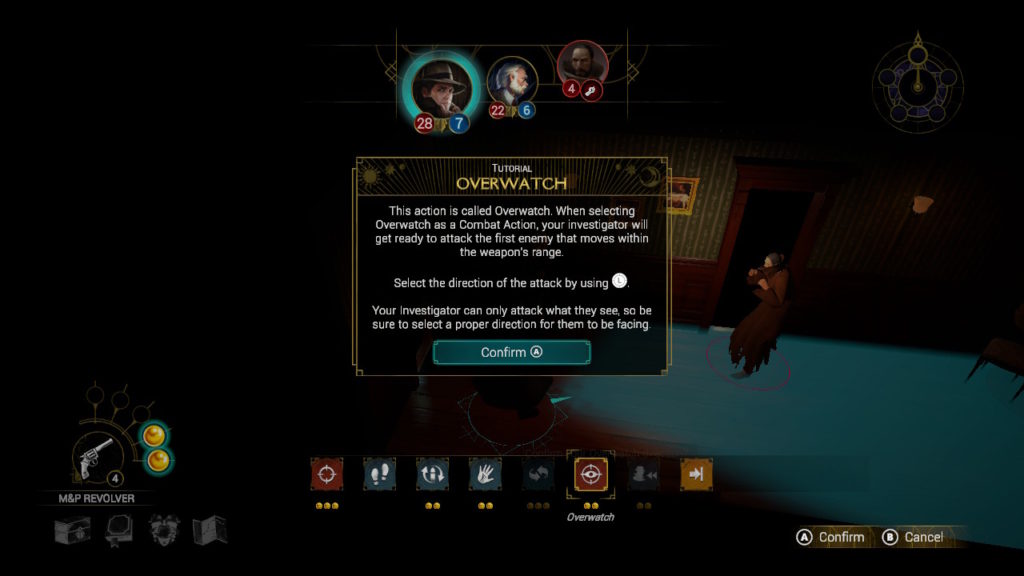
As for the enemies themselves, it feels like not a lot went into their inception. Human foes feel like they are clones wearing different costumes. As for the non-human ones, it feels like there’s only two unique designs not counting small bug-like creatures. And here is where games featuring both combat and horror generally fall flat when it comes to hitting that sweet spot of scaring the player, and at the same time making the combat feel great. One example of a game that does get this balance right is Diablo. This title however, doesn’t. The eventual reveal of the monsters don’t fill me with dread. Instead I see them more as bullet sponges given their expanded health pool. Moreover, their designs feel very generic and uninspired, which is truly quite unfortunate.
Buggy features.
Here I have a summary of notes on miscellaneous points about the game that I felt didn’t quite fit anywhere else in this review:
Performance-wise, this game runs a little like it’s moving through treacle… or a New Orleans’ swamp. It’s not unplayable, but moving your character feels like having to warm up the motor of an ancient automobile. While the game didn’t crash on me once during my playthrough, it certainly felt like it was going to once or twice.
Loading a file takes ages, I believe I have already mentioned. What I didn’t say before was that on loading a new chapter or case, the game will give your hands a quick massage as if to warm you up for the game. By which I mean my joycons gave an almighty rumble at that point and I’ve no clue why that’s the case.
Oh, and names of a handful of objects might not be what they seem:
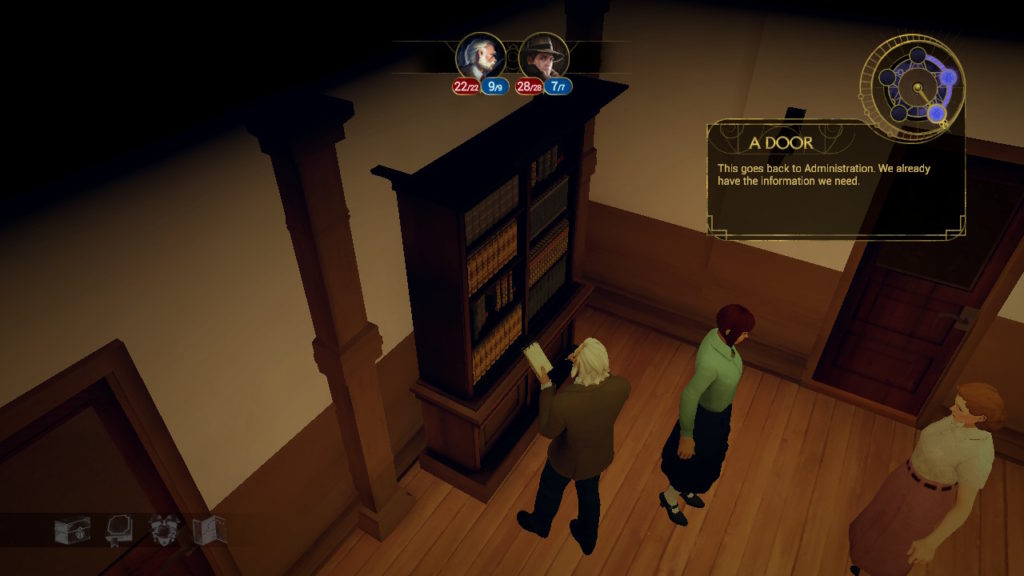
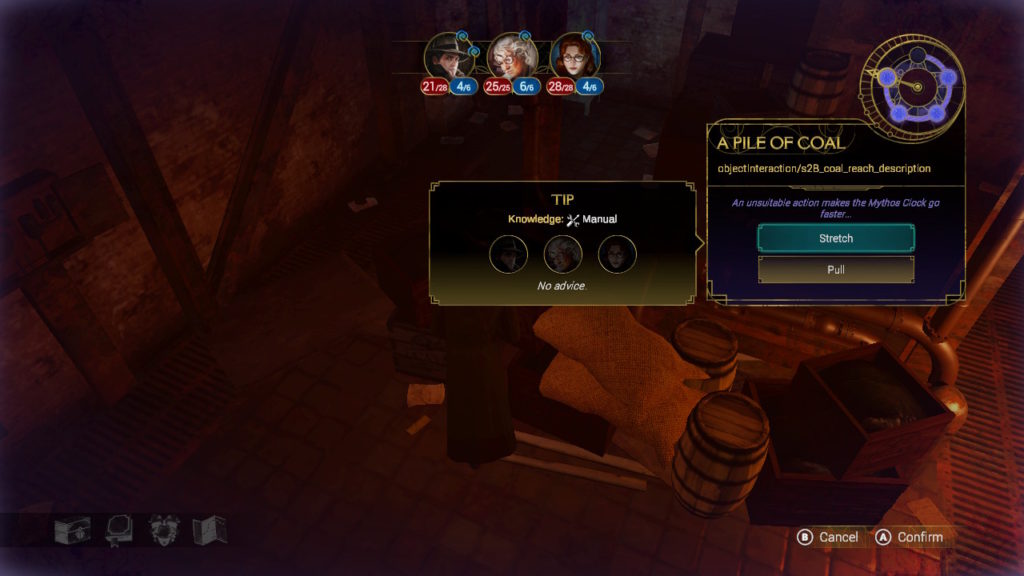
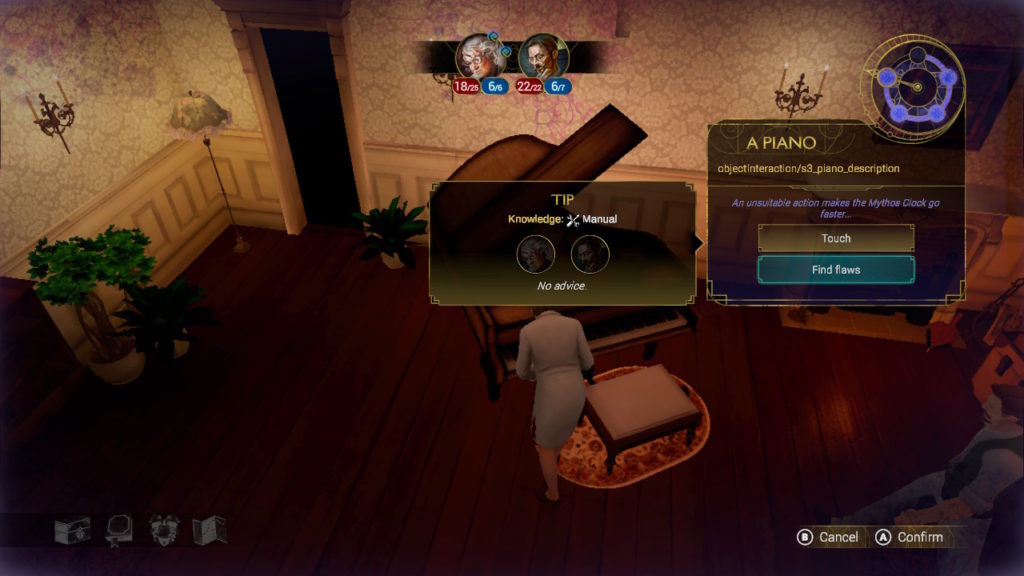
At the end of it all…
This is a bit of a flawed title. There are peeks at the game’s potential to be something more than what it is. As it stands however, it remains a rather mediocre (if somewhat faithful) adaptation of the board game it is based on. From middling performance and visuals, to mechanics that threaten to annoy and frustrate more than entertain, it feels like it could do with a little more time in the oven (development).
Despite all that, I don’t hate the game. I genuinely had some fun with my time with the game. I will admit that perhaps the game’s length felt about right. Playing it in short bursts, it certainly felt about right and doesn’t overstay its welcome. It’s not something I can wholeheartedly recommend you get at the drop of a hat, but if you’re curious and it’s on sale, it might alright to give it a shot.






3/5 – A mixed bag that I had fun with that may test your sanity.
Available now: $19.99
Follow Asmodee Digital:







